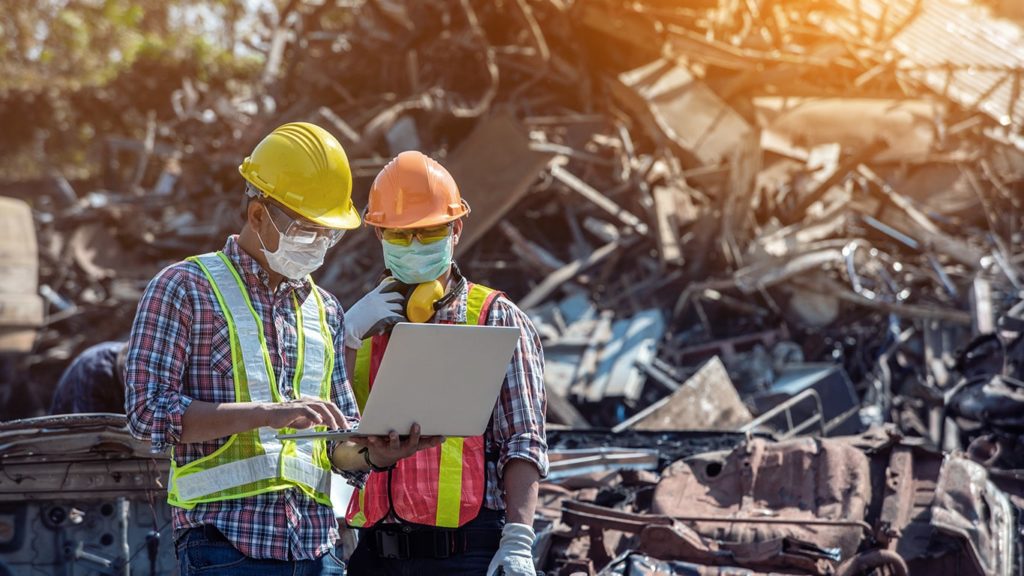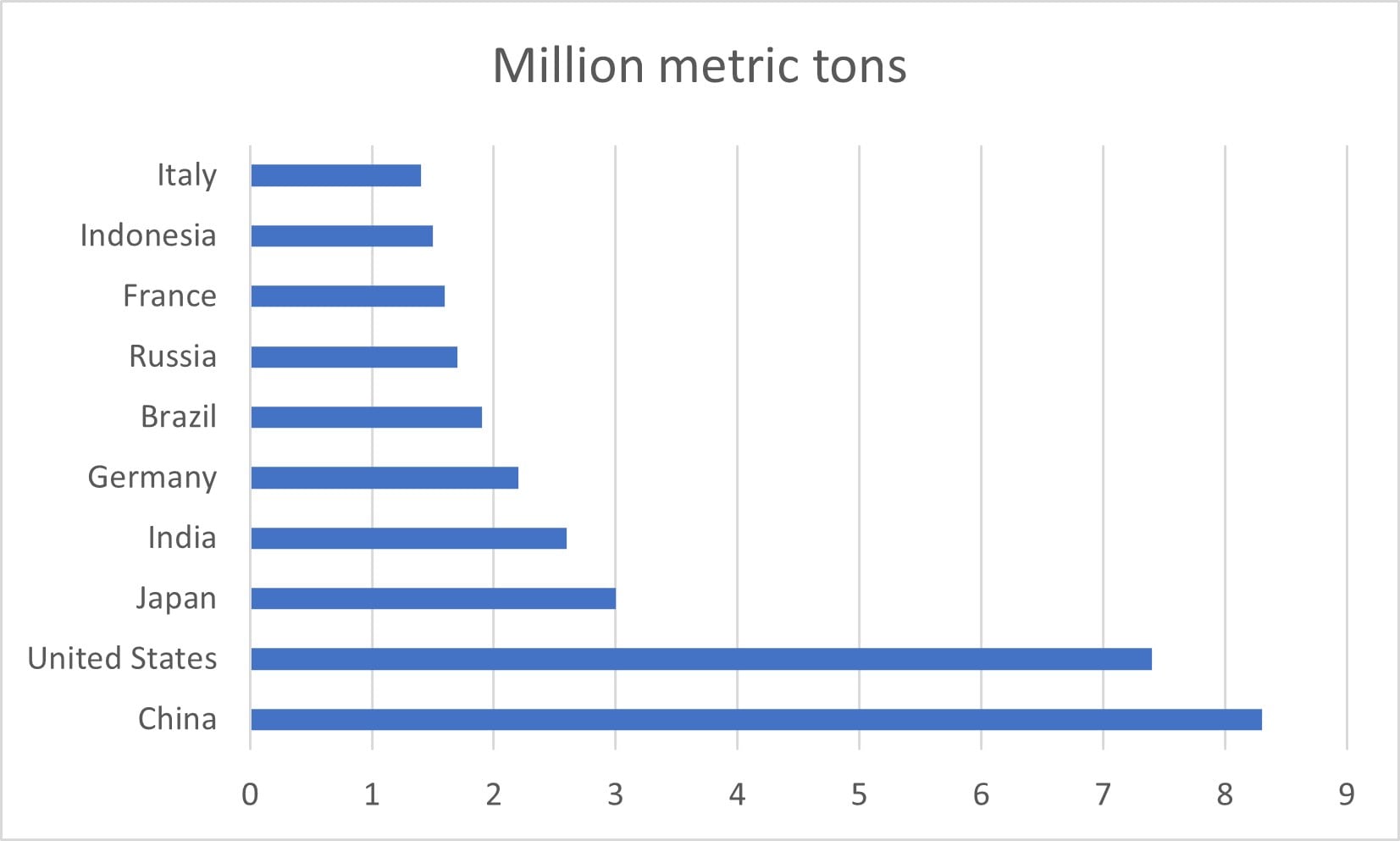
Technology comes with the end of life and once it reaches that, they are discarded. And, if for some reason they stop working or are no longer wanted, they are disposed of. Here’s where we have to take precautions to discard them as they can be very harmful to the environment. Technological waste is probably one of the biggest problems that comes with the improvements we are making in technology. So, it is essential that every individual is aware of this issue.
What is E-Waste?
E-waste or Technological waste is the discarded or damaged electronic devices or parts. It can include anything from everyday equipment such as TVs, laptops, microwave ovens, to laboratory equipment such as microscopes. These wastes contain metals like lead, copper, and cadmium that can contaminate the surroundings, which is why they are disposed of carefully.
Types of Tech Waste
There are different types of technological waste. They can be divided into the following groups –
1. Household Appliances
The household appliances include technology such as vacuum cleaners, LED lighting system, refrigerator, air purifier, electric cookers, electric fans, etc.
2. Information Technology Devices
The information technology devices include the keyboard, webcam, printer, projector, scanner, tablet, computers, monitors, etc.
3. Office Equipment
The office equipment includes a photocopier, shredder, coffee maker, multiple monitors, desktop computer, IT servers, etc.
4. Medical Equipment
The medical equipment includes defibrillators, anesthesia machines, patient monitors, medical heart monitors, electronic brain wave machines, etc.
5. Entertainment Devices
The Entertainment devices include smart displays, streaming devices, soundbars, speakers, Wi-Fi systems, etc.
Once these technologies are no longer useful, they are collected and segregated into different types to accordingly recycle them. It is important to categorize them so that we can protect our environment from getting contaminated and recycle efficiently.
Impact of Technological Waste
Technological waste needs to be discarded separately from other waste. It not only has an impact on our environment, but also leads to data theft. Let’s look at both the impacts in detail.
Impact of E-waste on Environment
Technological waste includes harmful chemicals which when comes in contact with our environment, contaminates it. There are harmful materials such as mercury, beryllium, and lead in this waste which poisons the soil. If this waste is carelessly tossed in the landfill, then the toxic materials are released into the air. It is especially the case when technological waste is exposed to heat. Eventually, it damages the atmosphere.
The harmful impact of technological waste doesn’t stop here. Over time, the toxic materials find their way into groundwater, contaminating it, and causing harm to the animals living on land and water. The channels of water such as ponds, lakes, and streams are the source of nourishment for these animals and when it is contaminated it makes them sick. It also has a harmful impact on us. We human beings are at risk of serious respiratory issues. And, considering we can end up inhaling contaminated air, our lung cells can be impacted negatively.
Security Threats of Tech waste
Apart from negatively impacting the environment, discarding technological waste carelessly can lead to security threats. Businesses keep shredders so that they can destroy critical documents and serial numbers. If these devices with personal information are tossed in landfills, then they can be easily recovered. Most of them prefer to physically destroy the devices to protect the information from getting stolen. But, think about it, is it a smart move to just physically destroy devices when you know that batteries can explode? The technological waste should be handed over to the professionals who can physically dismantle or destroy them.
Top 10 countries that generated most e-waste
| Country | Million metric tons |
|---|---|
| China | 8.3 |
| United States | 7.4 |
| Japan | 3.0 |
| India | 2.6 |
| Germany | 2.2 |
| Brazil | 1.9 |
| Russia | 1.7 |
| France | 1.6 |
| Indonesia | 1.5 |
| Italy | 1.4 |
Here is a visual image of the above table that shows the amount of e-waste generated by countries in 2022 –

Importance of Recycling Technological Waste
The number of technological waste has risen exponentially. Previously we didn’t have much technology, but now it is everywhere. The more technology we use, the more waste is generated. It was comparatively easier to manage technological waste in the past. We had limited technology and once it reached its end of life, it was discarded. But, nowadays, the technology is discarded in a couple of months. How often do you change your smartphone? Most of them do it in 12 to 18 months.
There are so many brands launching smart devices every month that people are tempted to let go of their current technology and purchase the latest ones. The older versions become obsolete as new technology is launched with additional features. The best part about recycled products is that they use less energy and create less pollution. With the help of recycling, we are also able to recycle natural resources such as aluminum, copper, and silver.
How to Recycle Technological Waste?
The Recycling centers are set up in multiple locations to prevent technological waste to be disposed of in landfills. These centers have advanced technology that makes the recycling process simpler. The technicians recycling the technological waste have specialized skills that they use to create new products. Here are 3 things that you can do to discard the technological waste properly –
1. Keep Them Out of Landfills
We have already discussed what harm technological waste can cause if they are discarded at landfills. By keeping the waste out of landfills, you can protect your environment and prevent pollution.
2. Recover Materials
You will find that technological waste has materials that can still offer value. All you have to do is recover those materials and hand them over to the manufacturers. They can then use it to make new products.
3. Sell or Donate Outdated Technology
If you no longer need your current technological devices, then instead of discarding them, you can either sell or donate them. There are sites that let you sell unwanted devices and earn money. If selling outdated technology doesn’t interest you, then you can donate them as well. You can easily find programs that accept the donation of these devices.
Conclusion
We have seen how devastating technological waste can be for our environment. How about taking a small step to protect our environment, and drop our technological waste at the recycling center? In this way, we will be able to minimize the negative impact that technological waste has on the quality of air, water, and soil. Also, by now, we have accepted that we will continue to use technology then why not learn to discard it properly? Just ensure that you format your device and dispose of it properly to protect yourself and your environment.